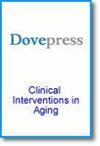全髋关节置换术后超重和肥胖老年患者隐性失血的风险因素分析和提名图模型建立
IF 3.7
3区 医学
引用次数: 0
摘要
背景:全髋关节置换术(THA)已成为老年终末期髋关节疾病患者的首选治疗方法。全髋关节置换术后,超重和肥胖患者的隐性失血量(HBL)较高,这不仅会影响患者的快速康复,还会造成更大的经济负担。我们的目的是通过回顾性分析确定导致超重和肥胖患者 THA 术后 HBL 升高的风险因素,并建立 THA 术后超重和肥胖患者大量 HBL 的提名图预测模型:方法:共纳入 505 例接受 THA 治疗的超重和肥胖患者,按照 7:3 的比例随机分为建模组和验证组。收集了患者的人口统计学和相关临床数据。通过皮尔逊、独立样本 T 检验和多元线性回归分析得出影响超重和肥胖患者 THA 术后 HBL 的独立危险因素。使用 R 软件建立了术后 HBL 的提名图预测模型,以及接收者操作特征曲线(ROC)、校准曲线和决策曲线分析(DCA):HBL 为 911±438 mL,占围术期总失血量(1104±468 mL)的 79.5±13.1%。多元线性回归分析显示,HBL 与股骨头坏死、无高血压、手术时间长、术前红细胞较高和术前 D-二聚体水平较高有关。建模组和验证组的 ROC 曲线下面积(AUC)分别为 0.751 和 0.736,而校准曲线的斜率接近 1:结论:HBL是超重和肥胖患者THA术后总失血量(TBL)的重要组成部分。股骨头坏死、无高血压、手术时间较长、术前红细胞较高和术前D-二聚体水平较高是这些患者术后HBL的独立危险因素。根据这些数据构建的预测模型具有更好的鉴别力和准确性,可为患者带来更好的净收益。本文章由计算机程序翻译,如有差异,请以英文原文为准。
Risk Factors Analysis and Nomogram Model Establishment of Hidden Blood Loss in Overweight and Obese Elderly Patients After Total Hip Arthroplasty
Background: Total hip arthroplasty (THA) has become the first-choice treatment for elderly patients with end-stage hip disease. The high amount of hidden blood loss (HBL) in overweight and obese patients after THA not only affects rapid recovery, but also results in a greater economic burden. We aimed to identify risk factors that contribute to elevated HBL in overweight and obese patients after THA by retrospective analysis, and establish a nomogram prediction model for massive HBL in overweight and obese patients after THA.
Methods: A total of 505 overweight and obese patients treated with THA were included and randomly divided into modeling and validation sets according to a 7:3 ratio. The demographic and relevant clinical data of the patients were collected. The independent risk factors affecting HBL after THA in overweight and obese patients were obtained by Pearson, independent sample T-test, and multiple linear regression analyses. R software was used to establish a nomogram prediction model for postoperative HBL, as well as a receiver operating characteristic (ROC) curve, calibration curve, and decision curve analysis (DCA).
Results: HBL was 911± 438 mL, accounting for 79.5± 13.1% of the total perioperative blood loss (1104± 468 mL). A multiple linear regression analysis showed that HBL was associated with necrosis of the femoral head, absence of hypertension, longer operative time, higher preoperative erythrocytes, and higher preoperative D-dimer levels. The areas under the ROC curve (AUC) for the modeling and validation sets were 0.751 and 0.736, respectively, while the slope of the calibration curve was close to 1. The DCA curve demonstrated a better net benefit at a risk of HBL ≥ 1000 ml in both the training and validation groups.
Conclusion: HBL was an important component of total blood loss (TBL) after THA in overweight and obese patients. Necrosis of the femoral head, absence of hypertension, longer operative time, higher preoperative erythrocytes, and higher preoperative D-dimer levels were independent risk factors for postoperative HBL in these patients. The predictive model constructed based these data had better discriminatory power and accuracy, and could result in better net benefit for patients.
Methods: A total of 505 overweight and obese patients treated with THA were included and randomly divided into modeling and validation sets according to a 7:3 ratio. The demographic and relevant clinical data of the patients were collected. The independent risk factors affecting HBL after THA in overweight and obese patients were obtained by Pearson, independent sample T-test, and multiple linear regression analyses. R software was used to establish a nomogram prediction model for postoperative HBL, as well as a receiver operating characteristic (ROC) curve, calibration curve, and decision curve analysis (DCA).
Results: HBL was 911± 438 mL, accounting for 79.5± 13.1% of the total perioperative blood loss (1104± 468 mL). A multiple linear regression analysis showed that HBL was associated with necrosis of the femoral head, absence of hypertension, longer operative time, higher preoperative erythrocytes, and higher preoperative D-dimer levels. The areas under the ROC curve (AUC) for the modeling and validation sets were 0.751 and 0.736, respectively, while the slope of the calibration curve was close to 1. The DCA curve demonstrated a better net benefit at a risk of HBL ≥ 1000 ml in both the training and validation groups.
Conclusion: HBL was an important component of total blood loss (TBL) after THA in overweight and obese patients. Necrosis of the femoral head, absence of hypertension, longer operative time, higher preoperative erythrocytes, and higher preoperative D-dimer levels were independent risk factors for postoperative HBL in these patients. The predictive model constructed based these data had better discriminatory power and accuracy, and could result in better net benefit for patients.
求助全文
通过发布文献求助,成功后即可免费获取论文全文。
去求助
来源期刊

Clinical Interventions in Aging
GERIATRICS & GERONTOLOGY-
CiteScore
6.20
自引率
2.80%
发文量
193
期刊介绍:
Clinical Interventions in Aging, is an online, peer reviewed, open access journal focusing on concise rapid reporting of original research and reviews in aging. Special attention will be given to papers reporting on actual or potential clinical applications leading to improved prevention or treatment of disease or a greater understanding of pathological processes that result from maladaptive changes in the body associated with aging. This journal is directed at a wide array of scientists, engineers, pharmacists, pharmacologists and clinical specialists wishing to maintain an up to date knowledge of this exciting and emerging field.
 求助内容:
求助内容: 应助结果提醒方式:
应助结果提醒方式:


